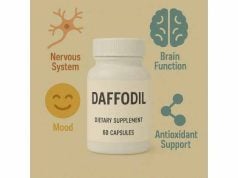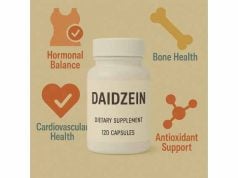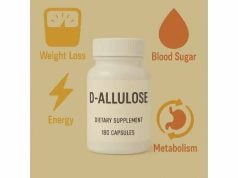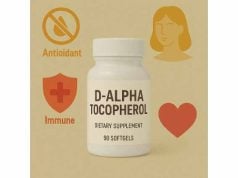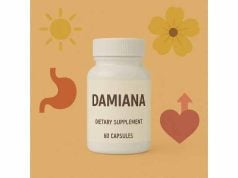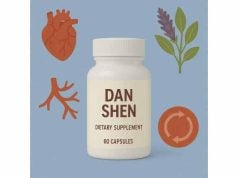
Dimethylglycine (DMG) sits quietly inside your cells as part of the body’s one-carbon (methylation) network. It is formed when betaine donates a methyl group to homocysteine, and it is then broken down inside mitochondria to sarcosine and glycine. Because of this central positioning, DMG is marketed for energy, immunity, brain function, and exercise performance. The truth is more measured: DMG is a normal metabolite, not a vitamin, and clinical research in humans is limited, with several controlled trials failing to show meaningful benefits for common claims. Still, some people are curious whether a supplemental dose might help them feel steadier energy or support methylation when diet is sub-optimal. This guide explains what DMG is, what it does (and does not) do, how to approach dosage, who should avoid it, and what the evidence actually says—so you can make a careful, informed decision.
Essential Insights for DMG Users
- Supports one-carbon metabolism as a natural methylation intermediate; supplement benefits are unproven.
- Small controlled trials in autism and multiple sclerosis did not show clear clinical improvements.
- No established human dose; products often supply ~100–250 mg per capsule; start low if used.
- Avoid during pregnancy, breastfeeding, and in children unless a clinician recommends it.
Table of Contents
- What is dimethylglycine (DMG)?
- Claimed benefits vs reality
- How to use DMG: dosage and timing
- What affects your response
- Side effects and who should avoid
- What the evidence says today
What is dimethylglycine (DMG)?
Dimethylglycine—abbreviated DMG and sometimes called N,N-dimethylglycine—is a simple derivative of the amino acid glycine. It is not an essential nutrient and it is not recognized as a vitamin (despite old marketing that labeled “vitamin B15”). Your body makes DMG as part of one-carbon metabolism: when betaine donates a methyl group to homocysteine (through the betaine-homocysteine methyltransferase pathway), methionine is regenerated and betaine becomes DMG. DMG is then shuttled into mitochondria and oxidized by the enzyme dimethylglycine dehydrogenase (often abbreviated DDH or DMGDH) to sarcosine and eventually glycine, handing off one-carbon units to the folate pool along the way. In other words, DMG is a waypoint in methylation—produced, processed, and reused in a tightly regulated cycle.
You also get small amounts of DMG from food. It occurs naturally in animal products (especially organ meats) and in modest amounts across plant foods. These amounts are far below typical supplement doses. Importantly, circulating DMG is widely used by researchers as a marker of methylation flux and betaine use; for example, when people take betaine, blood DMG reliably rises. That does not automatically mean that taking DMG reverses the process or yields the same benefits as betaine. Mechanism matters: betaine is a methyl donor; DMG is a product that the body must further metabolize.
Why is DMG sold as a supplement? Historically, it has been promoted for diverse claims—endurance, immune support, mood, attention, seizure control, and neuroprotection. The rationale is usually indirect: because DMG participates in methylation and mitochondrial steps, marketers infer benefits for energy and brain function. But in physiology, being “in the pathway” is not the same as improving outcomes when taken as a pill. Biological networks are under feedback control; pushing on one node does not always move the system in a helpful direction. That is why we look to well-designed human trials to test whether a theoretical benefit shows up in real people.
A few clinical studies have examined DMG in specific contexts. Trials in autism and progressive multiple sclerosis have not found clear, clinically meaningful benefits. A small crossover study explored short-term metabolic effects in a rare mitochondrial disorder. These trials, along with safety summaries from academic centers, shape today’s cautious view: DMG is a normal metabolite with plausible but unproven benefits in the general population. For most people, focusing on overall diet (adequate folate, vitamin B12, choline, and betaine) is a more evidence-based way to support one-carbon metabolism.
Claimed benefits vs reality
Supplements are often marketed by association: if a molecule touches an “energy” or “brain” pathway, it is presumed to boost energy or cognition. DMG is a classic example. Because it appears inside methylation and in mitochondria, claims quickly spread—better endurance, sharper focus, calmer behavior, stronger immunity. What happens when we check those claims against controlled human data?
Autism and behavior. One of the most cited uses of DMG originated decades ago, with anecdotal reports of improved communication or attention in autistic children. A randomized, double-blind, placebo-controlled trial in children with autism and pervasive developmental disorders evaluated these claims and found no significant benefit of DMG over placebo on validated behavior scales or clinician ratings. This study remains a key reason mainstream clinicians do not recommend DMG for autism. The result also underscores a larger lesson: parent-observed day-to-day variability is high, and only controlled trials can separate true effect from expectation and natural fluctuation.
Multiple sclerosis and fatigue. Because methylation intersects with cellular energy handling and myelin biology, DMG has been tested in people with progressive multiple sclerosis (MS). A pilot, double-blind, placebo-controlled randomized trial assessed fatigue and functional outcomes. The investigators did not observe clinically relevant advantages for DMG on the primary endpoints. Pilot studies are small by design, so they can miss subtle effects; however, when a treatment meaningfully improves fatigue or function, even small trials often show a signal. The lack of a signal here tempers enthusiasm.
Mitochondrial function. A crossover study in children with cytochrome c oxidase deficiency examined whether short-term DMG would change oxygen consumption. This rare, severe condition makes it difficult to generalize the findings to the wider population. The trial was short and focused on physiologic measures, not long-term clinical outcomes. Such studies are valuable to understand mechanism but do not establish broad therapeutic utility.
Immune support and performance. Anecdotes abound in athletes and in people trying to “fortify” immunity. Peer-reviewed, modern, well-controlled human data are sparse. Where performance has been tested, results tend to be neutral. And for immunity, large-scale trials are lacking. Here, a practical approach is to look at adjacent, better-studied tools: sleep, vaccination, physical activity, nutrition, and—in the methylation arena—maintaining adequate folate, B12, and choline status.
Bottom line. Across major marketed outcomes—autism, MS fatigue, exercise performance—quality trials have not shown clear benefits. That does not absolutely exclude a niche use case, but it does put the burden of proof squarely on future studies. If you are considering DMG, anchor your expectations: it is not a proven treatment for neurodevelopmental or neurodegenerative conditions, and it is unlikely to transform workouts or immune resilience. If your goal is to support methylation, start with fundamentals: balanced diet, adequate B vitamins, and (when indicated) medical management of elevated homocysteine using established therapies.
How to use DMG: dosage and timing
There is no established, evidence-based therapeutic dose of DMG for the general population. That fact should shape how you approach any trial use. Most commercial products supply about 100–250 mg of DMG per capsule or tablet, often labeled simply as “dimethylglycine,” sometimes as the hydrochloride salt. Because modern human trials have not identified a clear clinical benefit, dosing in practice is guided by what has been used safely in research and by product labeling.
A cautious, common-sense approach is to start low, evaluate, and stop if you notice no benefit or any side effects. For healthy adults who choose to experiment, a practical pattern is:
- Start with 100–125 mg once daily with food for a week. This lets you gauge tolerance (e.g., gastrointestinal comfort, sleep, headache).
- If well tolerated, some users increase to 100–125 mg twice daily (morning and early afternoon). There is no evidence that higher amounts are better.
- Limit trial duration to 4–8 weeks before reassessing. In published trials, short courses have been typical. If nothing improves by then, continuing is unlikely to help.
- Avoid stacking DMG with multiple methyl-donor supplements at once (e.g., high-dose methylfolate, methylcobalamin, betaine) unless a clinician is following your lab values. It is easy to overshoot without benefit.
Timing is flexible. Because DMG is not a stimulant, it does not have to be taken pre-workout or at night; morning or midday with a meal is reasonable. If you use prescription medications for neurological, psychiatric, or cardiovascular conditions, discuss timing and necessity with your clinician first. DMG is not known for severe drug interactions, but trials in these populations are limited, and avoiding surprises is wise.
Quality matters. Choose products from manufacturers that publish third-party testing for identity and purity. DMG is a small molecule and relatively stable, but mislabeled products are an industry-wide concern. Look for a straightforward ingredient panel: dimethylglycine (or dimethylglycine HCl) with minimal inactive excipients.
Finally, set clear goals and a stop date. If your target is “more energy” or “clearer focus,” define how you will judge success (for example, daily fatigue rating, minutes of focused work before a break, or exercise performance metrics). Keep notes. If benefits are not obvious, let the experiment go. Supplements are tools, not commitments.
What affects your response
Responses to nutrition and supplements often vary because biology varies. That is especially true in one-carbon metabolism, where many nutrients and enzymes intersect.
Dietary methyl donors. Folate, vitamin B12, choline, and betaine shape methylation. If you are low in one of these, your methylation network may not run smoothly. Since DMG is a product of the betaine-to-homocysteine reaction and a hand-off to the folate pool, your status for these nutrients could influence how your body handles supplemental DMG. In practice, correcting a deficiency (e.g., B12) has clearer benefits than adding DMG.
Genetics and enzymes. Variants in genes that encode methylation enzymes (e.g., MTHFR, BHMT) and in dimethylglycine dehydrogenase (DMGDH/DDH) can alter one-carbon flux. Rare DMGDH deficiency leads to elevated DMG in blood and urine and can be clinically benign or variably symptomatic. Common variants may subtly influence biomarker levels without creating a disease. These background differences are one reason two people can have different responses—or no response at all—to the same supplement.
Liver and kidney function. The liver is a hub for one-carbon metabolism, and the kidneys help clear small molecules. If you have impaired liver or kidney function, talk with your clinician before trying DMG. Even when a supplement seems “mild,” altered clearance or metabolism can change exposure.
Age and life stage. Pregnancy, lactation, and childhood are periods of rapidly changing methylation demands and tight developmental control. Because human data on DMG in these groups are lacking, the conservative approach is to avoid supplement use unless a clinician recommends it for a very specific reason.
Medication context. There are no well-documented, consistent drug–DMG interactions in the medical literature. Still, caution is warranted with drugs that affect seizure threshold, mood, or mitochondrial function, simply because these are the areas where DMG has been explored and where unintended effects could be missed in small studies.
Expectations and measurement. Finally, the psychology of trying a new supplement matters. People often feel better for a week or two after starting anything that promises improvement (the placebo effect is real and powerful). To reduce bias, write down your goals and track a simple metric. If DMG truly helps you as an individual—despite group-level neutral trial results—you should see a consistent pattern over several weeks. If not, simplify.
Side effects and who should avoid
DMG has been used in small clinical trials and appears generally well tolerated at typical supplemental amounts. Reported side effects are usually mild and may include gastrointestinal discomfort (nausea, loose stools), headache, or restlessness in sensitive individuals. Because DMG participates in methylation, some users also report transient changes in sleep or mood when they combine it with other methyl-donor supplements; these reports are anecdotal rather than trial-proven, but they are a good reason to avoid high-dose stacking.
Even when side effects are uncommon, it is important to name the groups who should skip DMG or seek individualized guidance:
- Pregnant or breastfeeding individuals. There are no robust safety data. One-carbon metabolism is tightly regulated in pregnancy; do not add DMG without a clinician’s guidance.
- Children and adolescents. Trials in autism did not show benefit, and safety data are limited. Avoid pediatric use outside of a supervised clinical plan.
- People with liver or kidney disease. Because DMG is produced and cleared through pathways that involve these organs, ask your clinician before use.
- Those on complex neuropsychiatric regimens. If you take medications for seizures, mood disorders, attention disorders, or neurodegeneration, discuss DMG with your prescriber. Trials to date are small; even if frank interactions are unlikely, coordination matters.
- Allergies or sensitivities. DMG itself is a small molecule; reactions are rare. Most issues stem from fillers, flavorings, or contamination. Select simple formulas from reputable brands and stop immediately if you develop a rash, wheezing, or other signs of hypersensitivity.
Practical safety steps include starting with the lowest dose on the label, taking DMG with food, and avoiding late-evening dosing until you know how you respond. Discontinue if you develop persistent headache, insomnia, palpitations, or mood changes. And remember the most important safety filter: if there is no clear benefit by 4–8 weeks, stop. Using a supplement indefinitely “just in case” adds cost and complexity without proof.
If your interest in DMG comes from a lab test showing a “methylation problem,” it is better to work with your clinician to interpret the full picture (dietary pattern, B-vitamin status, homocysteine, and clinical context) rather than adding DMG reflexively. Many methylation markers shift in response to diet, sleep, alcohol, and training load; fixing the basics often normalizes them.
What the evidence says today
When evidence and marketing diverge, it helps to map the terrain clearly: What do controlled trials show? What is still speculative? And where are the promising questions for future research?
Autism spectrum disorder. A randomized, double-blind, placebo-controlled trial testing DMG in children with autism and pervasive developmental disorders found no significant benefit over placebo on core behavioral outcomes. This does not rule out idiosyncratic responses in individual children, but as a population-level strategy, DMG does not meet the bar for recommendation. Families are better served by evidence-based behavioral therapies and, when appropriate, targeted medical care.
Progressive multiple sclerosis. A pilot double-blind, placebo-controlled randomized clinical trial in progressive MS evaluated DMG for fatigue and related measures. The trial did not demonstrate clinically meaningful improvements on its primary endpoints. As a pilot, it sets the stage for more rigorous studies if there were signals to chase—but the absence of a signal is informative in itself. It suggests that DMG should not be expected to relieve fatigue or alter function in progressive MS.
Mitochondrial disorders. An older double-blind randomized crossover study assessed short-term DMG in children with cytochrome c oxidase deficiency, focusing on physiologic measures of oxygen consumption. The study design and rare disease context make it difficult to generalize to common fatigue or performance concerns. It is a helpful mechanistic probe, not a general endorsement.
Mechanisms and biochemistry. Recent structural work on human dimethylglycine dehydrogenase has clarified how the enzyme processes DMG inside mitochondria. These insights are valuable for basic science and may help in diagnosing and understanding rare inborn errors of metabolism. They do not, however, change the practical conclusion for supplement users: DMG is a well-behaved intermediate in a larger network, and modifying it from the outside has not yet translated into broad clinical benefits.
Safety summaries. Academic overviews for patients emphasize that DMG has not shown consistent benefits for common marketed indications and that robust safety data in pregnancy, lactation, and pediatrics are lacking. That does not mean DMG is dangerous in standard adult doses; it means evidence is insufficient to assert clear benefits or to recommend routine use.
What to do instead (when goals are methylation, energy, or brain function). If your homocysteine is elevated, established interventions include optimizing folate and vitamin B12 status and, in some cases, using betaine under medical guidance. For energy and cognition, sleep, exercise, nutrition, and management of medical conditions consistently outperform unproven supplements. If you still want to experiment with DMG, do it as a short, low-dose, well-measured trial with clear criteria for success.
The research frontier. Future studies could test whether specific genotypes or nutrient patterns predict a meaningful response to DMG, or whether DMG has a role in narrowly defined metabolic settings. Until then, the fairest summary is simple: DMG is a normal human metabolite with a clean mechanistic story but limited clinical proof. Treat it as a hypothesis, not a cure.
References
- N,N-Dimethylglycine in patients with progressive multiple sclerosis: result of a pilot double-blind, placebo, controlled randomized clinical trial 2021 (RCT)
- Effectiveness of N,N-dimethylglycine in autism and pervasive developmental disorder 2001 (RCT)
- The effect of short-term dimethylglycine treatment on oxygen consumption in cytochrome oxidase deficiency: A double-blind randomized crossover clinical trial 2003 (RCT)
- Dimethylglycine | Memorial Sloan Kettering Cancer Center 2022 (Patient resource/overview)
- High-resolution structural insights into the human dimethylglycine dehydrogenase (DDH) enzyme 2024 (Mechanistic/structural study)
Medical Disclaimer
This article is for general educational purposes and is not a substitute for professional medical advice, diagnosis, or treatment. Do not start, stop, or change any supplement or medication based on this information without speaking with a qualified healthcare professional who knows your health history and current medications.
If you found this guide helpful, please consider sharing it with a friend or on Facebook, X (formerly Twitter), or any platform you prefer, and follow our social channels. Your support helps us keep creating careful, evidence-based resources. Thank you.

